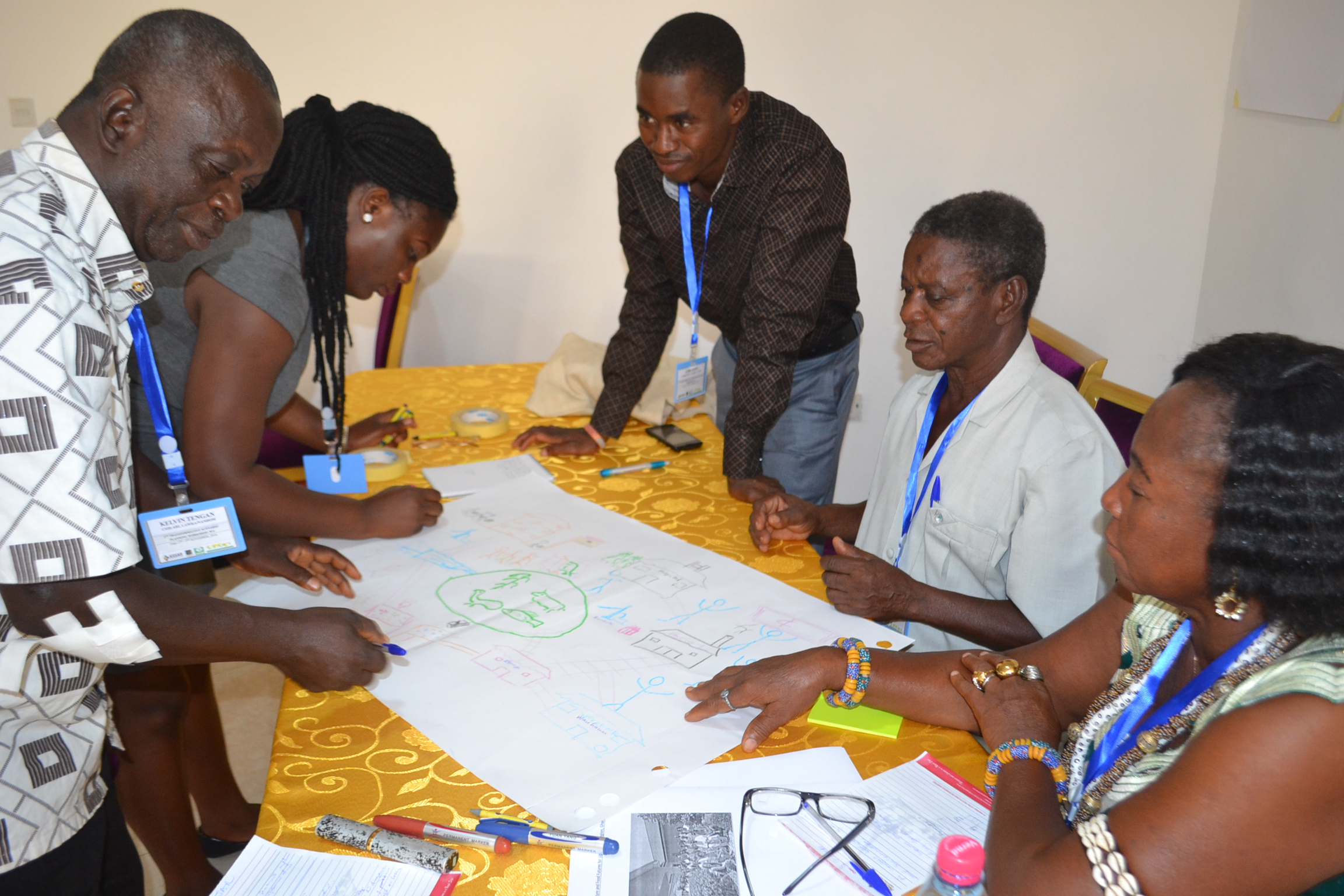Deciding the future of agriculture in Upper West: the case of Transformative Scenario Planning in Ghana

By Prince Ansah and Rahinatu S. Alare Technical Officers, University of Ghana

In the Upper West Region of Ghana, agriculture is the main livelihood activity for more than 90% of households. In recent times, crop farming has become a challenge for smallholder farmers in the region due to increasing droughts, dry spells, and erratic rainfall caused by climate change. This has deepened food insecurity in the region. It is estimated that over two million people in Ghana are vulnerable to becoming food insecure in the near future. Of this number, according to the World Food Programme more than 450,000 people are already food insecure with 34% of them living in Upper West Region.
ASSAR Ghana is focused on strengthening failing agriculture productivity in the region through intensification of agriculture systems.
Prior to the first workshop, the ASSAR Ghana team went through a rigorous process with reference group members to select the right stakeholders to be part of this process. Even though inadequate resources meant that not all the intended institutions could be present, there was fair representation from almost all relevant sectors that support and promote agriculture and adaptation activities in the region.
The TSP process provided the right participatory methodology to explore the potential of agriculture in the region. The process provided a good platform for stakeholders involved in climate change adaptation and agriculture to discuss the future of agriculture in the face of harsh climatic conditions.
The diverse stakeholders – who had different expertise and who represented institutions and communities – worked closely together in two separate workshops in Wa within a period of six months.
The first workshop focused on defining the major issues confronting agriculture in the region and on building four future scenarios around these issues. The second workshop allowed stakeholders to follow up on these scenarios, and led them to the proposal of five key strategies for addressing agriculture and climate change in the region.
The TSP process became a memorable event for many stakeholders, as it was the first time that such a diverse group of participants had sat together in a room to discuss and plan the future for agriculture.

|
The TSP process provided a good platform for stakeholders involved in climate change adaptation and agriculture to discuss the future of agriculture in the face of harsh climatic conditions. |
This is what Naa (Dr.) Ernest Sangsor-Tulong, the Vice President of the Nandom Traditional Council and a planning lecturer at the University of Development Studies, Ghana, had to say:
“I learnt new approaches to solving problems. It is a transformational approach and quite different from the normal planning processes we know. This is more practical and it gives stakeholders the opportunity to share exactly what they see and feel about agriculture and food security in the region”.
Peter Shiloh, a farm business advisor for both Lawra and Nandom districts also shared how he intends using the knowledge gained from the TSP process:
“The processes of trying to think out of the box when one is confronted with challenges has given me insights why some projects are successful while others are not. This is because they try to predict the future. As a field worker who works directly with farmers, I will try to apply this new knowledge to some of the challenges farmers face in crop production by mapping out potential challenges and ways of addressing them.”
The TSP process became a learning tool in different ways.
As a participatory approach, it had the ability to integrate diverse and often opposing views across the spectrum to agree on specific issues affecting our study area.
The process was seen as a solution-oriented qualitative research method that explored both current and future situations of agriculture and food security and plans to address these. However, some felt that the TSP outcomes lacked quantitative backing as the predictions for the future are based on stakeholder assumptions.
This article first appeared in the March 2018 ASSAR Spotlight